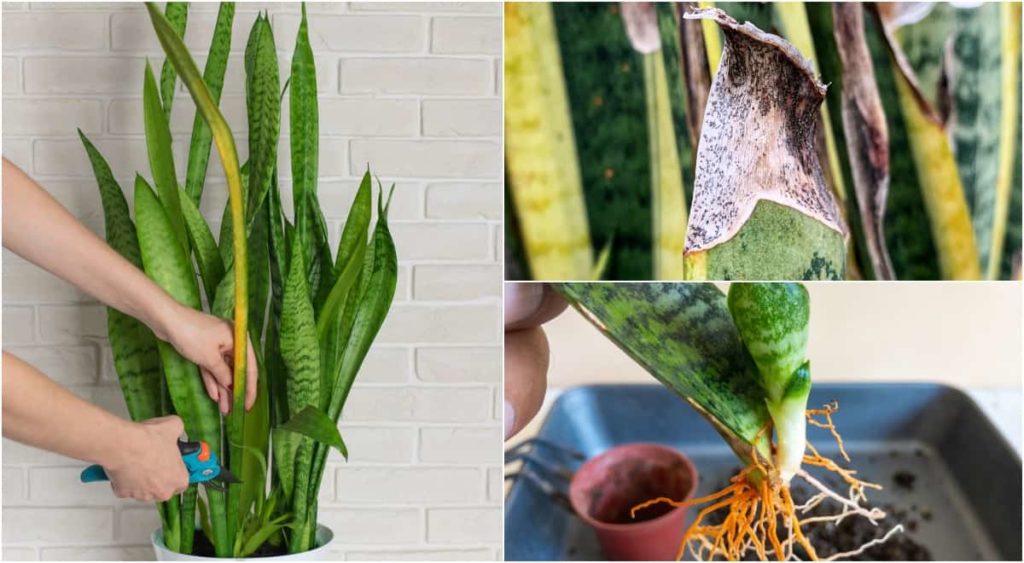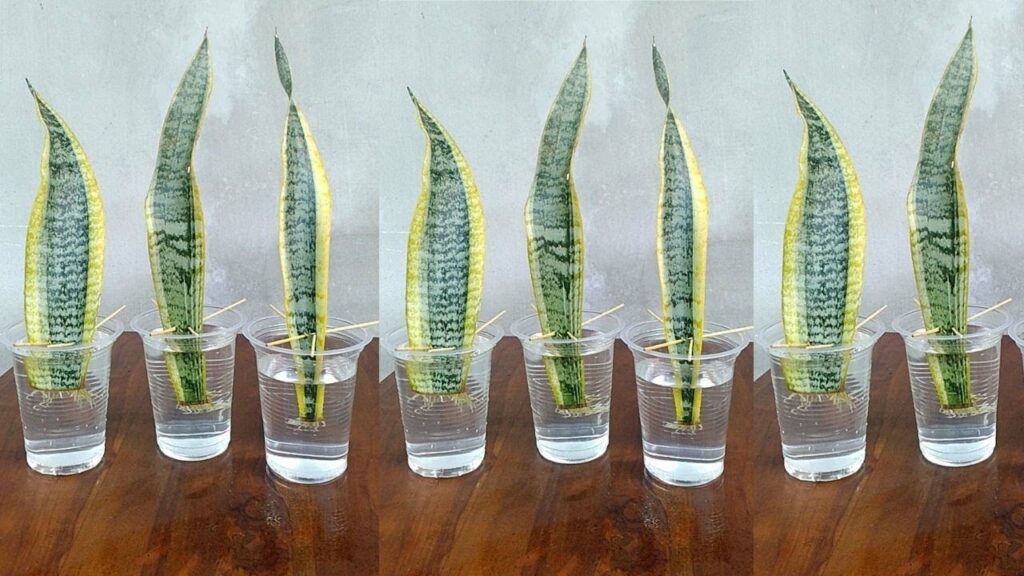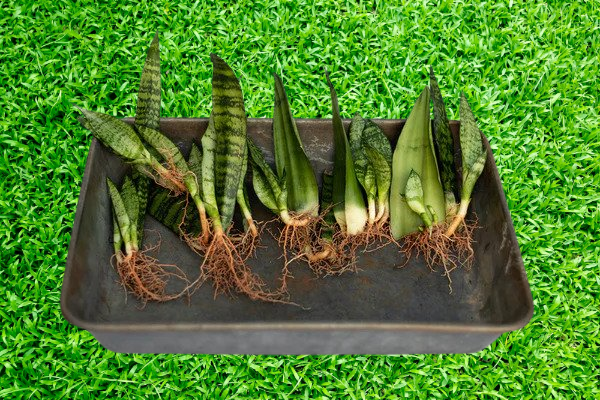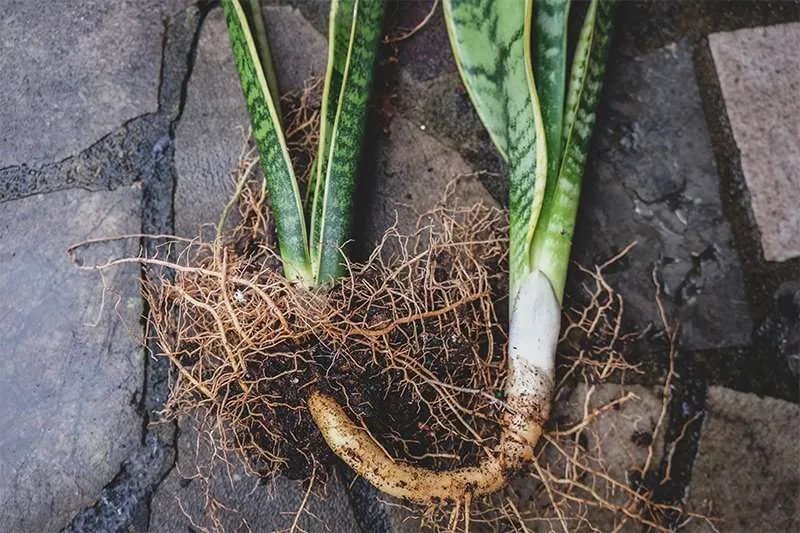How To Propagate Snake Plant – 4 Easy Methods

Propagating snake plants is not a rocket science but you need to keep certain things in mind. Here are four different ways to Propagate Snake Plant:
- Water propagation: this means growing new plants in water.
- Soil Propagation: this means growing new plants in soil.
- Propagation by division: this means dividing the roots of an existing plant to create a new one.
- Rhizome Propagation: this means growing new plants from a piece of the root-like stem of an existing plant.
Let’s take a closer look at each one.
We will answer two questions people often ask about how to propagate Snake plants.
How To Propagate Snake Plant – 4 Easy Ways
The snake plant is a type of plant that is easy to take care of and is a popular choice for indoor decoration. Its scientific name is Dracaena trifasciata, which used to be called Sansevieria trifasciata.
To propagate snake plant, you can try doing these four methods:
Water Propagation
To propagate snake plants, you can use a part of the original plant and grow it into a new one. Here’s what to do:
- Cut a leaf from the mother plant near the soil.
- Put the bottom of the cut leaf into a glass of water, ensuring only a little bit is in the water.
- Put the glass in a place where it will get light but not too much sun.
- Change the water every week.
- You can then put the new plant in the soil if the roots grow.

Advantages:
- Easy to do by yourself.
- You can see the roots growing.
Disadvantages:
- If you cut a snake plant that has different colors, the new plant may not have the same colors. To keep the colors, you need to use the division method.
- This is the slowest way to propagate snake plant.
Soil Propagation
To propagate sansevieria aka snake plants from soil follow the steps below:
- Cut a leaf from the mother plant close to the soil.
- Cut the leaf into small pieces, about 2 inches each.
- Let the cut pieces dry for a couple of days so they can heal.
- Put each piece into potting soil that lets water drain easily, like a special soil made for snake plants.

Advantages:
- You don’t have to put the cuttings in water.
- You can mix different types of snake plants (Sansevieria cylindrica, Sansevieria moonshine) in one pot.
Disadvantages:
- The new plants might not have special markings (like stripes or spots)
- You can’t see the roots growing unless you dig up the plant.
Snake Plant Propagation by Division Method
To divide your snake plant, follow these steps:
- Take the snake plant out of its pot and lay it on the ground.
- Cut the root clump of the snake plant into the desired number of pieces using a knife, scissors, or shears.
- Make sure each piece has at least three rhizomes, a green leafy top, or a baby snake plant attached. (A rhizome is a stem that grows underground and sends out roots and shoots.)
- Plant each piece in its own pot with well-draining potting soil for snake plants.

Advantages:
- This method is faster than snake plant leaf propagation.
- The new plants will have the same colors and markings as the original plant.
Disadvantages:
- Only works for large snake plants with many growths.
Rhizome Propagation
Here are the steps for propagating snake plants using rhizomes:
- Take your plant out of the pot.
- Look for underground stems (rhizomes) close to the roots.
- Cut the rhizome from the bottom of the plant.
- Let the cut rhizome dry for a day or two to help prevent rot.
- After it has dried, plant it in a pot filled with special snake plant soil.

Advantages:
- A quick method to make new snake plants.
- No need to split the original mother plant.
- Good for snake plants that have different colors on the leaves.
Disadvantages:
- The process of propagating snake plants through rhizomes involves removing the parent plant from its pot, which can be risky and might harm the plant if not done carefully.
WARNING: Snake plants are toxic to cats, so keep both of them away from each other.
Snake Plant Propagation – Frequently Asked Question
Some commonly asked questions on snake plant propagation are:
Q: When will I see growth in my new snake plant?
ANS: It may take 6 to 8 weeks for the new snake plant to start growing roots if it has the right conditions. If it’s an indoor plant without enough light, it may take longer for the new growth to appear.
Q: Why Isn’t My Snake Plant Growing?
ANS: Your new snake plant might not be growing because it’s not getting the right amount of light, water, or food.
Here’s what you can do:
- Put it in place with bright light but not too much direct sun.
- Be careful not to give it too much water, and make sure the soil is well-drained. Water it only when the top inch or two of the soil is dry.
- Use a new pot with holes in the bottom, so the water doesn’t get stuck.
- Use special soil for snake plants ; it’s perfect for snake plants care and helps them grow healthy.
Help Your Snake Plants Grow Strong and Healthy.
To ensure the growth is healthy and strong, use one of the four methods we discussed to propagate Snake Plant. Taking proper care can result in a snake plant flower blooming as well.
If you’re putting the cuttings into the soil, try using a a special potting soil for snake plants. This kind of soil helps with draining, lets air circulate, and provides food for your snake plant to grow.
ALSO READ:






